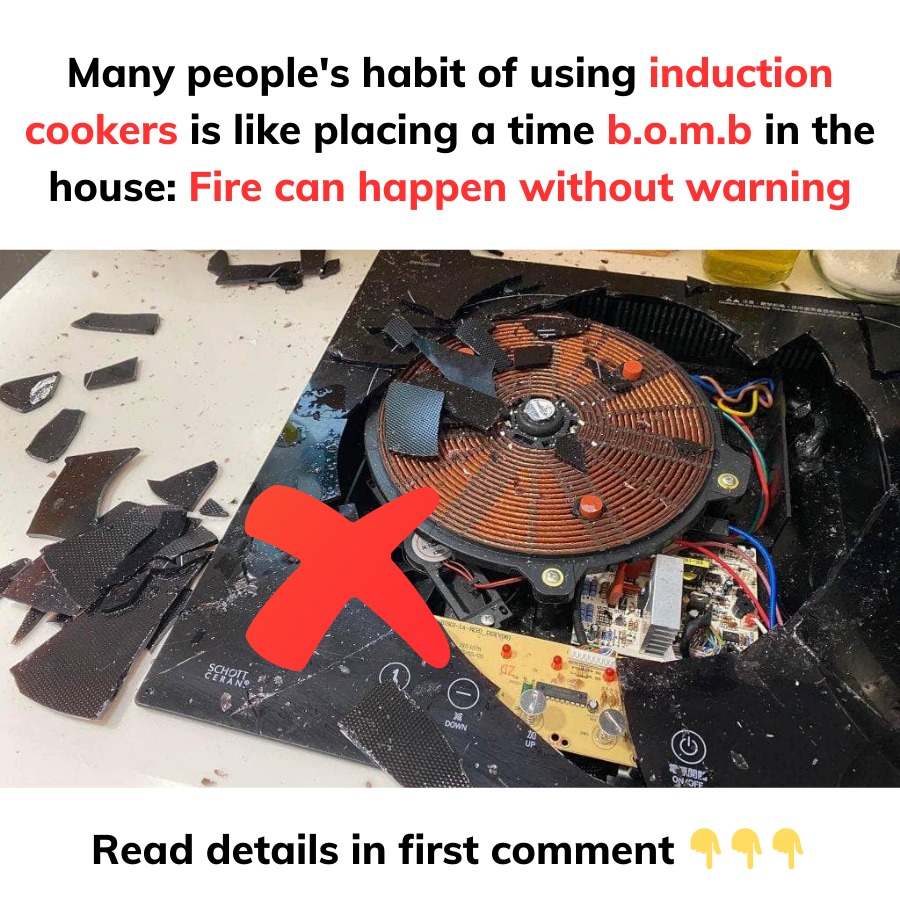Induction cookers have become a popular choice in many households thanks to their efficiency and modern design. However, improper usage habits can turn these convenient appliances into safety hazards. Below are some common mistakes people make and tips to ensure safe and efficient use of your induction cooker.

Unplugging the Power Immediately After Use
One of the most frequent errors is unplugging the induction cooker immediately after turning it off. Many believe this helps save electricity, but it actually prevents the cooling fan from running its course. The cooling fan is essential for dissipating heat from the internal components. Cutting the power prematurely can increase the risk of overheating, short-circuiting, or even causing a fire or explosion.
To avoid this, always wait until the cooling fan stops completely before unplugging the appliance. This simple step ensures the cooker cools down properly and prolongs its lifespan.
Cleaning the Stove Incorrectly
Cleaning the induction cooker right after cooking is another common mistake. While it may seem logical to clean it immediately, doing so while the stove is still hot can lead to cracks on the glass surface. Many users underestimate the seriousness of these cracks and continue to use the cooker. However, heat and vibrations from the internal fan can cause the cracks to expand. Over time, spilled liquids may seep through the cracks into the electronic components, resulting in short circuits, fires, or explosions.
To prevent such issues, let the stove cool down before cleaning. Use warm water and a soft cloth to gently clean the surface, ensuring the appliance remains in optimal condition.
Placing the Cooker in an Inappropriate Location
The placement of your induction cooker plays a significant role in its safety and performance. Placing the stove too close to a wall, near other heat-emitting devices, or next to a water source can create dangerous conditions.
Experts recommend keeping the stove at least 5–10 cm away from walls to allow proper air circulation and heat dissipation. Similarly, avoid positioning it near other appliances that emit heat, as this can increase the risk of fire due to excessive temperatures. Placing the cooker near a water source also poses the risk of short circuits and electrical fires.
Frequently Changing the Temperature Settings
Modern induction cookers come with touch panels and multiple cooking modes, but improper usage of these features can cause problems. Continuously pressing buttons or rapidly switching between temperature settings can overload the control circuit, leading to malfunctions, short circuits, or even explosions.
To avoid this, adjust the temperature gradually. Sudden changes can strain the appliance, reducing its efficiency and safety.
Tips for Safe and Efficient Use of Induction Cookers
To maximize the performance and safety of your induction cooker, keep these tips in mind:
- Gradual Temperature Adjustments:
When cooking, start with a low temperature and increase it gradually, allowing about two minutes between adjustments. This prevents the cooker from overheating and saves electricity. Additionally, avoid using the appliance at its highest power setting for extended periods, as this can cause overheating. Many cookers do not have automatic shut-off features to handle extreme temperatures, so it’s essential to monitor usage. - Regular Cleaning:
A clean induction cooker not only looks better but also performs more effectively. Grease and food residues left on the surface can cause the glass to crack when exposed to high temperatures. After using the stove, wait about 15 minutes for it to cool down, then wipe it with a soft cloth and a cleaning solution. This practice helps maintain the cooker’s efficiency and ensures your kitchen remains hygienic. - Turn Off the Stove Early:
If you are cooking dishes like stews or stir-fries, consider turning off the stove a few minutes before the food is fully cooked. The residual heat will continue to cook the food, helping you save electricity without compromising the meal’s quality.
By adopting these practices, you can enhance the safety and longevity of your induction cooker while maintaining its energy efficiency. Proper care and usage not only protect your family from potential hazards but also ensure your appliance serves you well for years to come.





